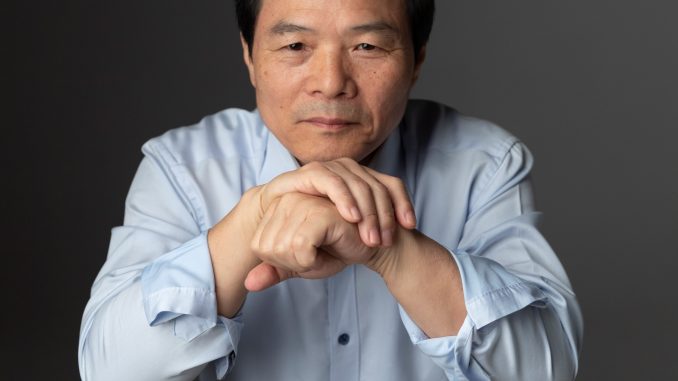
New leadership for Taekwondo superpower
President Jin-Bang Yang
The Korea Taekwondo Association is the oldest, largest and most successful national Taekwondo association in the world. We are happy that we had the opportunity to interview their newly elected President Jin-Bang Yang.
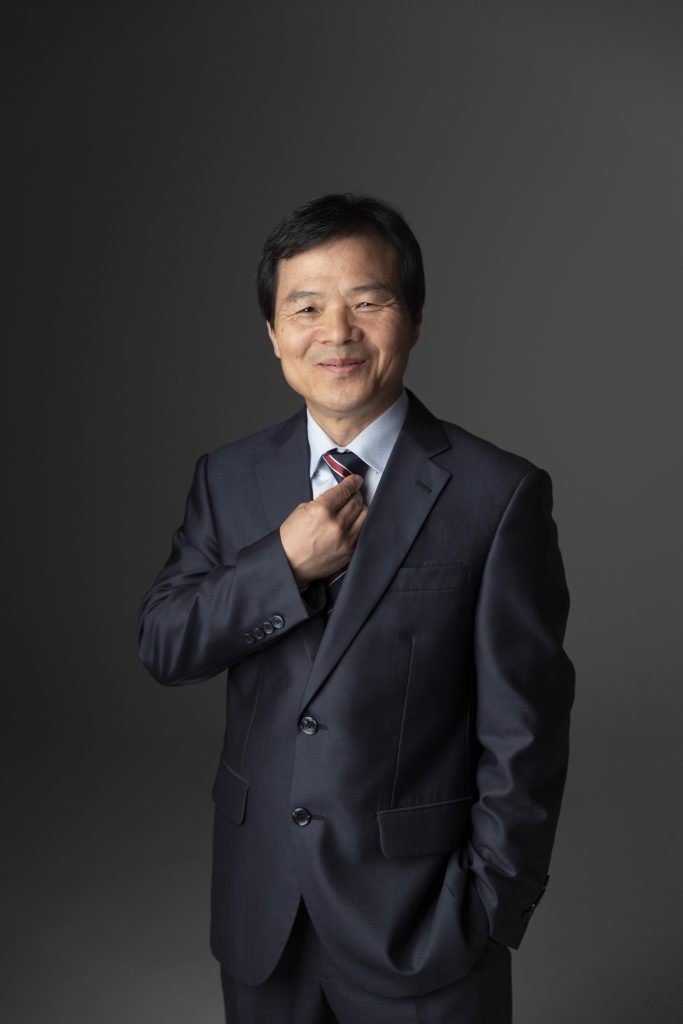 The Korea Taekwondo Association (KTA) was founded in 1959, making it not only the world’s first national Taekwondo Association, but also the very first Taekwondo organization. With a membership of around 10,000 Dojangs, the Korean federation effortlessly outshines much larger nations in terms of numbers. In addition, the KTA is by far the most successful organization: Korean athletes have so far won 239 medals at senior world championships, for example, followed by Spain with 111 – less than half as many. Of the Olympic medals in the senior category, 19 went to Korea, followed by China with 10. Since December 17 last year, the KTA has a new president with Jin-Bang Yang. President Yang was previously – in addition to numerous other positions – Chairman of the Technical Committee of World Taekwondo (WT) and is internationally recognized as one of the most knowledgeable and innovative experts in our sport.
The Korea Taekwondo Association (KTA) was founded in 1959, making it not only the world’s first national Taekwondo Association, but also the very first Taekwondo organization. With a membership of around 10,000 Dojangs, the Korean federation effortlessly outshines much larger nations in terms of numbers. In addition, the KTA is by far the most successful organization: Korean athletes have so far won 239 medals at senior world championships, for example, followed by Spain with 111 – less than half as many. Of the Olympic medals in the senior category, 19 went to Korea, followed by China with 10. Since December 17 last year, the KTA has a new president with Jin-Bang Yang. President Yang was previously – in addition to numerous other positions – Chairman of the Technical Committee of World Taekwondo (WT) and is internationally recognized as one of the most knowledgeable and innovative experts in our sport.
TA: President Yang, first of all, our warmest congratulations on your election as President of the Korea Taekwondo Association. As the mother of all Taekwondo associations, the KTA has its own dimensions. Could you give us some key data on this?
Jin-Bang Yang: The Korean Taekwondo Association has 17 regional associations. Currently about 10,000 Taekwondo schools (Dojangs) are registered, and more than 300,000 practitioners are taking promotion exams for black belts ranks every year. More than 15,000 elite athletes are registered, and more than 15 national level championships are held each year. If you consider championships held in each regional area, it can be said that taekwondo competitions are being holding somewhere in Korea almost every day of the year. The Korea Taekwondo Association has about 30 full-time employees and about 400 volunteer officials including referees, committee members, and lecturers for competitions and education activities.
TA: It’s a very large organization. How are the elections held here?
Jin-Bang Yang: The election for the president of the Korea Taekwondo Association is held every four years. Elections are held at the end of the year in the year of the summer Olympics Games. Each local association allocates voting right to representatives of each field, such as athletes, coaches, dojang instructors, referees, and local association president and officials, have. In this presidential election, 190 people were allocated for the vote. Out of 190 votes, 120 votes supported me.
TA: You are very well known internationally and have held numerous positions in the Taekwondo world. Could you give us an overview of the most important milestones in your career?
Jin-Bang Yang: From 1986, I started my Taekwondo Career in Kukkiwon working for instructor certificate program. After that, I worked for the World Taekwondo Federation International Referee Training Program in many years. In 1987, I produced a video work titled as “Arts of Olympic Taekwondo” that introduces the technique of Taekwondo competition (Gyorugy) first time in the World Taekwondo Federation. In 1990, I had a wonderful and learning experience working for a Box Office record movie as the Fighting Choreographer. In 1991-1993, I move to US and studied at the University of North Carolina for my Ph.D. course. At this time, I opened Taekwondo School and produced many national level athletes including some US national team members.
TA: You are known to be fluent in Chinese. How come?
Jin-Bang Yang: From August 1994, I was dispatched to China at the request of the World Taekwondo Federation to teach Taekwondo for the first time in mainland China. I taught athletes and coaches at Beijing Sports University. During the time, I worked with the newly established China Taekwondo Association, and in 1996, the Chinese national team first time in the history officially participated in the WTF World Taekwondo Championships held in Manila, Philippines. I was the head coach of the Chinese national team. Some of athletes who I had taught in China at the time became champions at the World Championships and Olympic Games some years later. I returned to the United States in 1996 and completed my Ph.D. work from the University of North Carolina. I returned to Korea in 1997 and started to teach students at Yongin University as a professor of the Department of Taekwondo. My video text series „The Science of Taekwondo Fighting“, was produced in 2000, for teaching Gyorugy techniques in systematic way, which has given many coaches around the world the knowledge, training methods, and inspiration for instruction of Taekwondo competition.
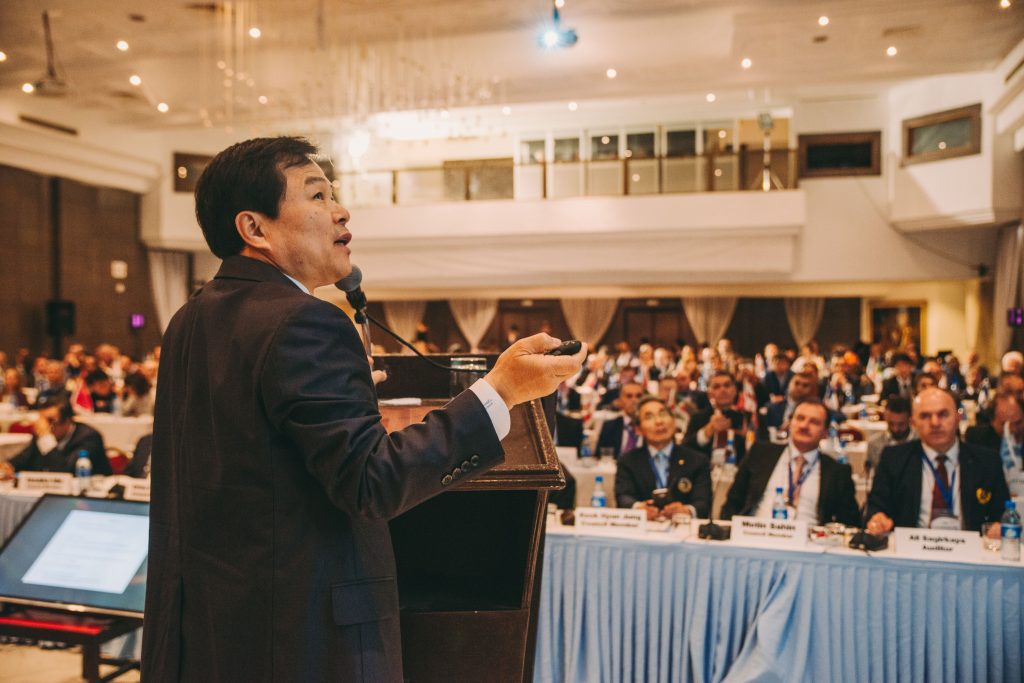 TA: When did you first work for KTA?
TA: When did you first work for KTA?
Jin-Bang Yang: From 2003, I was appointed as the Secretary General of the Korea Taekwondo Association. From 2003 to 2012, I worked for the administration of the Korea Taekwondo Association for about 10 years. During the time, I had organized and managed many international championships, including the Korea Open, the 1st and 2nd World Poomsae Championships, and the 2012 Gyeongju World Championships. In 2014, I was appointed as the Technical Chairman of the World Taekwondo Federation. As technical chairman of the World Taekwondo Federation, I worked for the launching and operation of the Grand Prix Championships Series, and the 2015 World Championships, the 2016 Rio Olympics, and the 2019 World Championships. I was appointed Director General of the World Federation from 2016 to 2017, worked for the administration of the World Federation.
TA: As chairman of the technical committee of the World Taekwondo Federation or World Taekwondo, as the association is called today, you have had a significant impact on international tournaments. What developments were you responsible for?
Jin-Bang Yang: After the World Taekwondo Federation adopted the electronic scoring equipment (PSS) in the game, big changes in techniques and strategic fashion in the game has come. Many coaches, athletes, and taekwondo audience have been positive about these changes. However, many coaches, athletes criticized technical and strategic consequences brought by PSS negatively. Regarding the technical and tactical changes in the game according to the adoption of PSS, the most important task of the Technical Committee was to increase or reinforce the positive aspects and outcomes of PSS and eliminate or minimize the negative elements and results from PSS. As an Olympic sport, the importance of improving the fairness, transparency, and safety of the game is the utmost important priority. At the same time, however, I thought it was important to make Taekwondo games more active and exciting. The first thing I emphasized as a technical chairperson was to change the rules of the game to eliminate unnecessary delays in time during the game and to make the progress of the game tight and intensive. Behaviors such as Falling down or crossing out the competition area was unconditionally penalized. In addition, the act of delaying the time by exaggerating the injuries was strictly enforced to be stopped, and these behaviors are almost eliminated from the game since then.
The electronic scoring protector is a tool to ensure fairness and transparency. However, there is technical limitation or weakness in ensuring the validity of the strike technique. Various efforts should be made to improve the technology of PSS so game with PSS guarantees the proper development of Taekwondo techniques. The technical committee continuously discussed on this point and tried to find new alternatives in competition rules and application of the Rules. Different allocation of scores for different techniques were adopted to suit for the PSS scoring characteristics. And undesirable or not valid kicking movements were prohibited. Too passive fighting techniques such as leading leg cut kick motion was also restricted by the rules. However, since the technology of electronic protection is still incomplete, coaches, referees, and technical committee members must continue to work to improve the function of PSS in Taekwondo game.
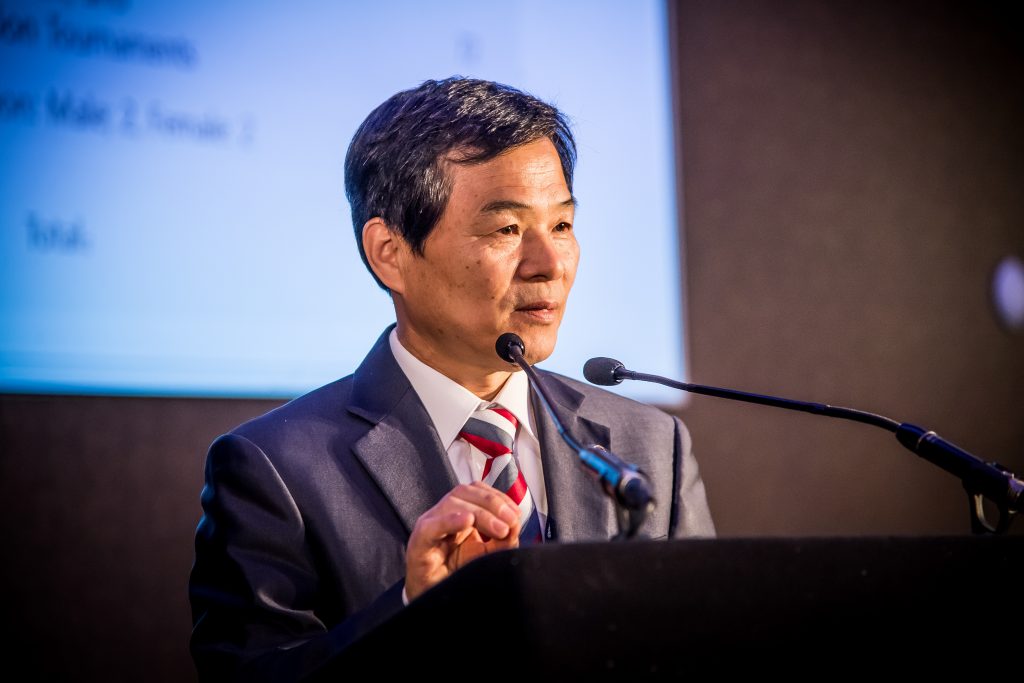 TA: What changes would you like for the Taekwondo competitions in the Kyorugi area?
TA: What changes would you like for the Taekwondo competitions in the Kyorugi area?
Jin-Bang Yang: I strongly believe that in the future, the Taekwondo competition should be further simplified. The penalty items should be further reduced, and the referee’s penalty call should be minimized for the competitor’s active fighting. I think the players should be able to focus on the game while worrying less about the declaration of penalty. I believe that reducing penalty will encourage competitors to engage more actively in technical exchanges so transform game into more intense and exciting style.
TA: You were also involved in important milestones in the Poomsae area. Could you tell us about it?
Jin-Bang Yang: WT 1st World Poomsae Championships was held in 2006? and the Korea Taekwondo Association organized the championships in Seoul. I worked with Park Soo-Nam, who was then Vice President of the World Taekwondo Federation together to create the basic structure of the WT Poomsae competition. Poomsae competition has a short history than Gyorugy competition. However, compare to Gyorugy competition, much more practitioners like to participate Poomsae competition. And Poomsae competition can be favored by a variety of age group. Since the 1st World Poomsae Championships Taekwondo Poomsae competition has been promoted widely and improved in many aspects. The Poomsae competition has a very positive effect on the technical development of Poomsae area. In fact, techniques in Poomsae have developed a lot through the Poomsae competition over the past 10 years.
However, compared to the Gyorugy area, the technological development of the Poomsae area is still insufficient. In Poomsae competition area the scoring criteria and method should need to be developed at the current stage. Changes in the scoring criteria are the most important factor in the technological development of Poomsae. So far, in the scoring of the Poomsae competition accuracy of the technical movement has been too much emphasized. In the future, there is a greater need to reduce the weight on the accuracy of the movement and focus on the mastery of the technical movement and presentation.
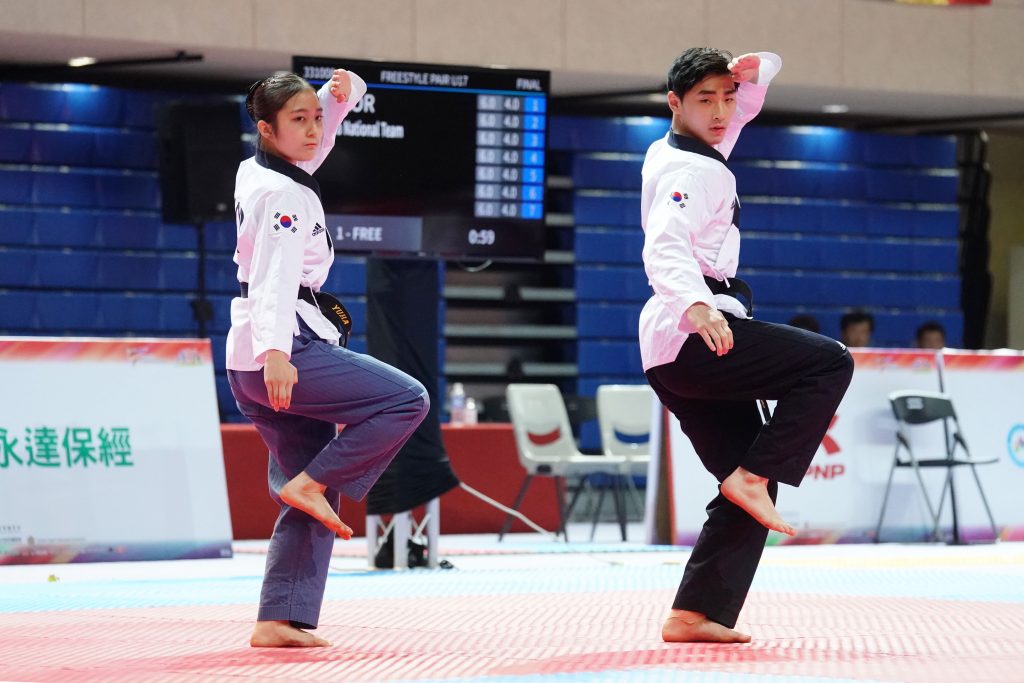 TA: How could Poomsae competitions be improved and also more attractive for spectators in the future?
TA: How could Poomsae competitions be improved and also more attractive for spectators in the future?
Jin-Bang Yang: I believe that introducing newer Poomsae for competitions is necessary in order to increase technical diversity in the Poomsae area, and in particular to embrace the dynamic kicking techniques into Poomsae movement. KTA will add sets of new Poomsae in that kinds. In addition, for the technical development of free style Poomsae, it is necessary to more specifically define and describe contents and standards for compulsory techniques of free style Poomsae. The Korea Taekwondo Association started a study on the new scoring criteria for Poomsae Games from this year. In addition, we are developing new software for scoring process that can ensure scoring process more transparent.
The Korea Taekwondo Association is preparing to officially play the breaking technique competition from this year along with the Poomsae game. A variety of breaking techniques are set in a certain technical category, and the competition rules are under developing, so soon breaking competition will be a sport event of Taekwondo.
TA: The KTA has a role model function among the national associations worldwide. How can the KTA support the international Taekwondo family and what message would you like to convey to Taekwondo athletes all over the world?
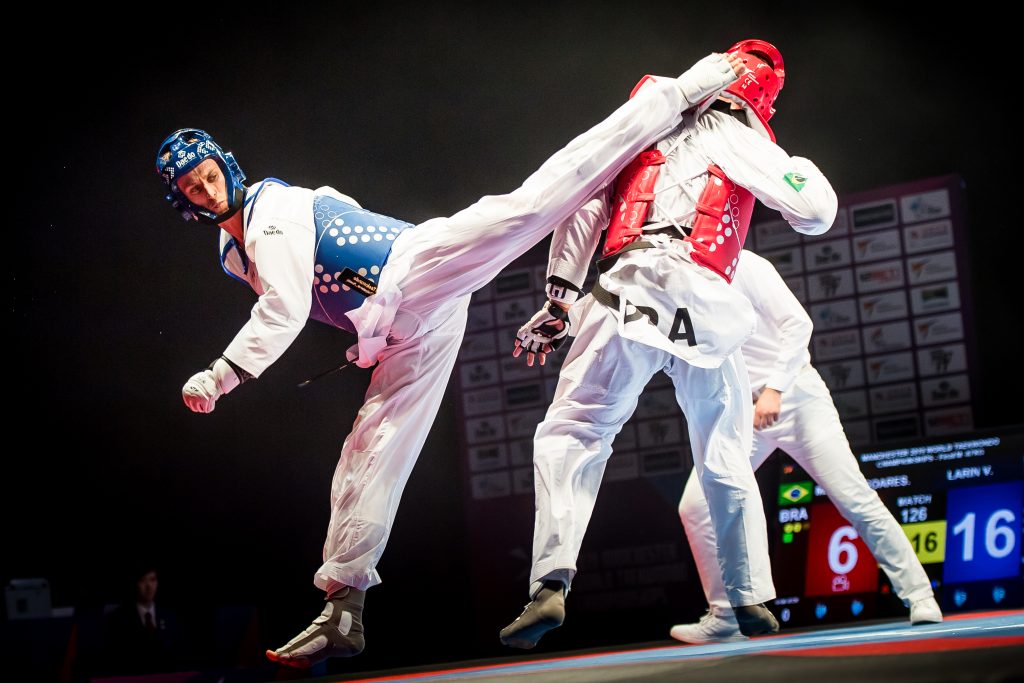 Jin-Bang Yang: Korea Taekwondo was the starting point of globalization of Taekwondo in the world. Taekwondo began in Korea. Techniques, practicing and teaching methods, cultures and competition formats originated in Korea. Today Taekwondo is well globalized. Taekwondo is practiced in various ways in many cities around the world. Now Korea also need to understand diversity of Taekwondo in the world. Many Taekwondo practitioners from all over the world visit Korea every year. Taekwondo families in Korea also want to interact with Taekwondo people around the world. They want to learn and understand each other.
Jin-Bang Yang: Korea Taekwondo was the starting point of globalization of Taekwondo in the world. Taekwondo began in Korea. Techniques, practicing and teaching methods, cultures and competition formats originated in Korea. Today Taekwondo is well globalized. Taekwondo is practiced in various ways in many cities around the world. Now Korea also need to understand diversity of Taekwondo in the world. Many Taekwondo practitioners from all over the world visit Korea every year. Taekwondo families in Korea also want to interact with Taekwondo people around the world. They want to learn and understand each other.
There are various competitions and events such as Korea Open and Taekwondo Culture Expo organized by KTA, and Taekwondo Hanmadang held by Kukkiwon. There are also educational events for the Taekwondo school or club owners and masters, such as the Taekwondo Education Expo organized by KTA. The Korea Taekwondo Association wants more oversea Taekwondo practitioners to exchange and become friends with Korean Taekwondo masters and students. Many Taekwondo competitions and events held in Korea are not a kind that only high-level athletes participate. These are competitions and events that many dojang and club practitioners can participate and enjoy. More participants are welcome to participate.
TA: Do you have a message especially for the European Taekwondo communities?
 Jin-Bang Yang: I want to thank the European Taekwondo friends for your love of Taekwondo. Thank you for sharing the love of Taekwondo together and understanding and enjoying Korea through Taekwondo. Through Taekwondo, I look forward to understanding each other more deeply and meeting each other more often. KTA welcomes Taekwondo families from Europe always. We will open various channels so that KTA can interact more closely with European Taekwondo families and you can reach KTA in convenience. Anytime you visit KTA, you will be welcomed.
Jin-Bang Yang: I want to thank the European Taekwondo friends for your love of Taekwondo. Thank you for sharing the love of Taekwondo together and understanding and enjoying Korea through Taekwondo. Through Taekwondo, I look forward to understanding each other more deeply and meeting each other more often. KTA welcomes Taekwondo families from Europe always. We will open various channels so that KTA can interact more closely with European Taekwondo families and you can reach KTA in convenience. Anytime you visit KTA, you will be welcomed.
I would like to extend my encouragement to the Taekwondo family around the world who are suffering from Corona 19. We will soon overcome this corona 19 and restore a healthier and more energetic daily life through Taekwondo. I wish that every one of Taekwondo family stay in a good health and meet together soon.
TA: Thank you for this interview and good luck and success for your work.
